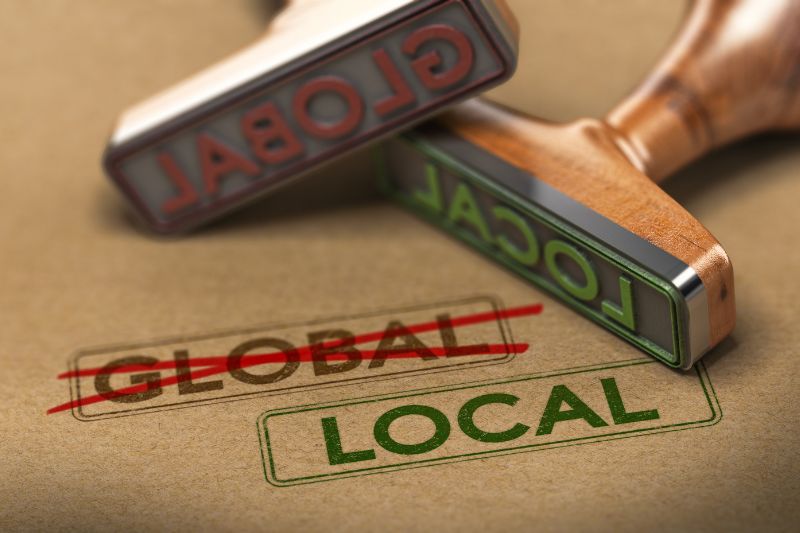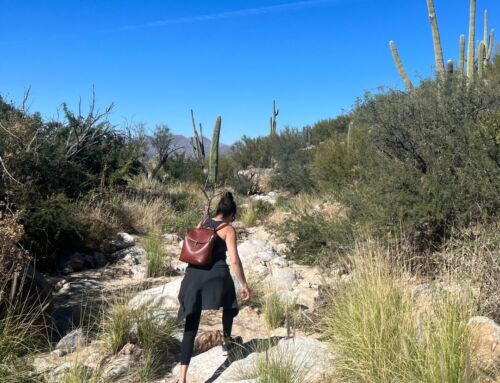
6 Ways to Improve Your Local SEO
Nowadays, it doesn’t matter who your audience is; your business can improve its local SEO, whether you can serve your neighbor or someone on the other side of the world. We love connecting and working with local clients, especially when we meet them at an in-person event. So, let’s dig into what local SEO is and why your business needs to keep it updated to drive more leads and sales.
What Is Local SEO?
Focusing on your local SEO means you focus on improving your rankings and visibility in local search results. Have you ever used Google Maps to find a business? 46% of searches on Google have local intent. Plus, with local intent searches, there’s typically a much higher intent to purchase online or visit a local business. As a result, a higher conversion rate. Consequently, maintaining your business’s local SEO offers a great opportunity and could bring in more income.
Beginning anew, it’s time to nurture your website. Do more than just post new material; assess what’s already there. Is it still useful to your target group? Does it match your business objectives?
Start Implementing These 5 Things to Improve Your Local SEO
Update Your Google Business Profile
“Near me” or “close by” type searches have grown exponentially in recent years. People searching online for local services and information about your business is now more prevalent than ever before. Having regular updates helps ensure Google can share the most accurate information with your potential customers. Furthermore, Keeping your Google Business listing up to date is essential to local SEO.
You won’t show up in a Google search for those without a Google Profile. And it’s completely free. All you need to do is verify your address with a postcard, and you’re up and running. Don’t have a business location? No problem! You can hide your home address after you’ve verified it.
A few secrets we love to share with our clients for the best local SEO success are:
- Avoid selecting the entire United States or the world as your service area. If you’re local, keep it local.
- Be complete and accurate. You get 750 characters in your meta description; use them!
- Get reviews regularly. If you’re not, it’s time to start asking for them.
- Post your social media posts to your Google Business profile as posts.
Get On Local Directories
Local directories are also commonly called citations. A few examples of these are:
- Chamber of Commerce
- Local business bureaus or small business development centers
- YEXT
- Yellow Pages
- Alignable
- Local MOZ
- BrightLocal
- Twin Cities Collective ( For my creative business friends in MN)
- Industry Specific Associations
The benefit of being on these local listings and other membership directories is that they help you with the local authority, and it’s considered a backlink. Psst… backlinks are great for SEO to help increase credibility with Google.
Ask for Reviews
Consistent Google reviews give businesses a big credibility boost to your local authority. In addition, it could drive more local leads by verifying that you’re the expert in your industry. So, if you have not gotten a review on Google lately, let this be your reminder to start asking for them and to implement a strategy around getting this consistent drip of reviews.
Location-Specific Metadata
SEO titles and meta descriptions have the power to improve the click-through rates of organic searches on your site. By adding your city, state, or address and phone number, you are giving Google more information on who you want to attract. Implementing a yearly review brings value to your site and SEO rankings.
Here are some client examples of how this can come to life:
- Minnesota’s Oldest Celebration
- Twin Cities Commercial & Residential Roofers
- Southwest Twin Cities Metro Newborn & Family Photographer
Blog Content
There is value in updating older, evergreen content. Consumers like fresh and up-to-date content. So not only will updates enhance their experience, but it’s an opportunity to increase SEO by driving traffic to your blog.
To revive an old blog post, you should:
- Target new keywords – Keyword research is great here
- Update the on-page SEO
- Update the body content
- Internally link to new content
- Correct typos
- Update the blog post with a new date
- Reindex your blog post with Google
Location Tagging & Social Media
Lastly, your social media profiles are here to play in the SEO arena. Most social platforms are indexed in SERPs (search engine results pages). According to HubSpot, posts or IG stories that include location tags have a 79% better engagement rate than other posts. In conclusion, it’s being proved that local customers and audiences can find you better, and the algorithms care.
If growing your local search rankings is something that you need help with and you want some support reach out and let’s chat!








